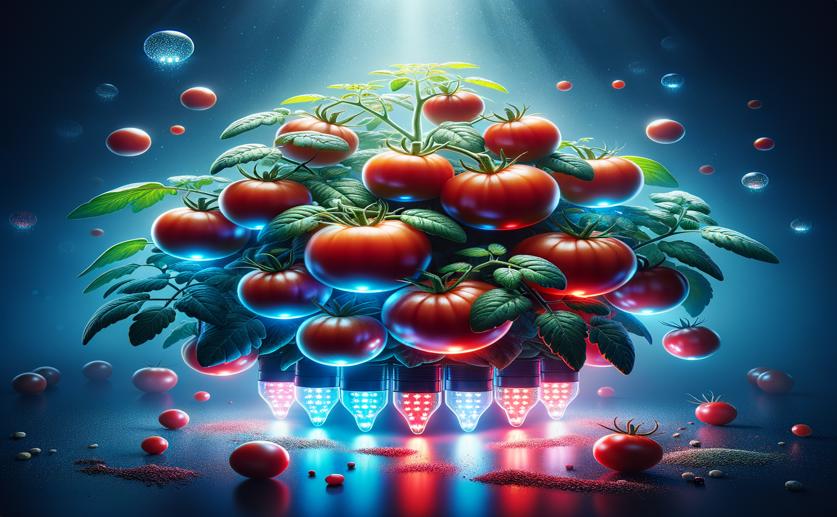
Better Tomato Growth and Nutrients with Inside-the-Plant LED Lighting
Jim Crocker
17th August, 2024

Image Source: Natural Science News, 2024
Key Findings
- The study by Isfahan University of Technology found that using LED lights in greenhouses with low daily light significantly improves tomato yield and nutritional value
- Intra-canopy LED lighting alone increased tomato fruit yield by 28.46%, outperforming top lighting, which only showed a 12.12% increase
- Combined top and intra-canopy lighting resulted in the highest overall tomato yield and a 123.4% boost in vitamin C content compared to no supplemental lighting
AgricultureGeneticsPlant Science
References
Main Study
1) Intra-canopy LED lighting outperformed top LED lighting in improving tomato yield and expression of the genes responsible for lycopene, phytoene and vitamin C synthesis.
Published 16th August, 2024
https://doi.org/10.1038/s41598-024-69210-z
Related Studies
2) Effects of light quality on CO2 assimilation, chlorophyll-fluorescence quenching, expression of Calvin cycle genes and carbohydrate accumulation in Cucumis sativus.
3) Adding Blue to Red Supplemental Light Increases Biomass and Yield of Greenhouse-Grown Tomatoes, but Only to an Optimum.
4) Supplemental Light-Emitting Diode Inter-Lighting Increases Tomato Fruit Growth Through Enhanced Photosynthetic Light Use Efficiency and Modulated Root Activity.



 6th August, 2024 | Jim Crocker
6th August, 2024 | Jim Crocker